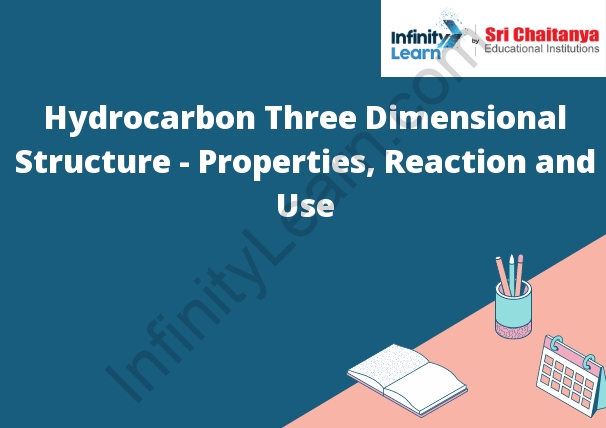Table of Contents
Hydrocarbon: Three Dimensional Structures, Properties and Reactions
A hydrocarbon is a molecule composed only of hydrogen and carbon. Hydrocarbons can exist as either a gas, liquid, or solid, and they are the simplest type of organic molecule.
The three-dimensional structure of a hydrocarbon is determined by the covalent bonds between the atoms. In a single hydrocarbon molecule, there are usually several different types of covalent bonds, which can give rise to a variety of shapes. The simplest hydrocarbons, called alkanes, have a chain-like structure, with carbon atoms bonded to each other in a linear fashion. Alkanes are also known as saturated hydrocarbons, because they have the maximum possible number of hydrogen atoms bonded to each carbon atom.
Other types of hydrocarbons, such as alkenes and alkynes, have a “bent” or “zigzag” shape, due to the presence of double and triple covalent bonds. These molecules are also called unsaturated hydrocarbons, because they have fewer hydrogen atoms than alkanes. Hydrocarbons can also have rings, such as in benzene, which has a six-sided ring.
The physical properties of hydrocarbons depend on the number and type of covalent bonds between the atoms. Alkanes are generally insoluble in water and are not very reactive. Alkenes and alkynes, on the other hand, are much more reactive and are often soluble in water.

Methane: Shape and Structure
Methane is a colorless, odorless, and flammable gas. It is the simplest hydrocarbon and is composed of one carbon atom and four hydrogen atoms. Methane is the major component of natural gas.
The carbon atom in methane is surrounded by four hydrogen atoms in a tetrahedral arrangement. The carbon-hydrogen bonds are covalent and relatively strong. The electron clouds of the carbon and hydrogen atoms are arranged so that the methane molecule is polar. The carbon atom is more electronegative than the hydrogen atoms and attracts the electrons in the bond. This gives the molecule a negative charge at the carbon atom and a positive charge at the hydrogen atoms.
Reaction of Methane with Chlorine
The reaction of methane with chlorine produces chloromethane and hydrogen chloride. Chlorine gas is added to a solution of methane in water. The chlorine gas reacts with the methane to produce chloromethane and hydrogen chloride.
Properties of Methane
Methane is a colorless, odorless, and flammable gas. It is the simplest hydrocarbon molecule and is the main component of natural gas. Methane is the primary component of landfill gas and is a major component of biogas.
Physical Properties of Methane
Methane is a colorless, odorless gas. It is the simplest hydrocarbon, consisting of one carbon atom and four hydrogen atoms. Methane is the major component of natural gas. It is also a greenhouse gas, and its combustion contributes to global warming.
Chemical Properties of Methane
Methane is a colorless, odorless gas. It is non-toxic, but it is an asphyxiant. Methane is flammable and can be explosive in concentrations as low as 5% in air.
Uses of Methane
Methane is a colorless and odorless gas that is the main component of natural gas. It is used as a fuel and is also a greenhouse gas. Methane is produced when organic matter breaks down in the absence of oxygen. It is used as a fuel because it is a clean-burning fuel that produces less carbon monoxide than other fuels. Methane is also a greenhouse gas because it is a powerful greenhouse gas that is 25 times more effective at trapping heat than carbon dioxide.








